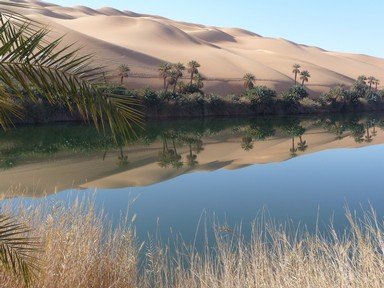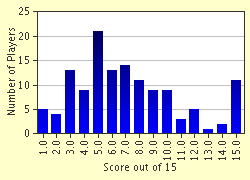Quiz Answer Key and Fun Facts
1. Libya has many large sites of antiquity dating from early Roman, Greek, and Carthaginian occupation of the area. Which of these sites is not in Libya?
2. An important Biblical character came from a Libyan city. Who is this character?
3. More than ninety five percent of Libya is desert. This desert is called the Sahara, which not surprisingly is an Arabic word, but what does it mean?
4. How many countries have borders with Libya?
5. The culture of Libya pre-dates the Roman and Greek influences by thousands of years, and there are many neolithic sites in the country.
6. Libya was the scene of fierce fighting during World War II. Which countries were involved in the first battles?
7. Which British General was Commander in Chief of the Allied forces during the successful campaign against Axis forces under the command of Field Marshall Erwin Rommel?
8. Although there are vast areas of sand with high dunes, there are no mountains in Libya.
9. The economy of Libya is dependent on oil production and the oil industry is one of Libya's main employers. Which of the following is not an oil related job title?
10. Present day Libya is divided into three major territories. Which of these is not one of them?
11. Until 2011 Libya's head of state was Colonel Muammar Qadhafi, but what was his actual political title?
12. Libya has undertaken one of the world's biggest ever water projects. What is the name of this project?
13. The present country of Libya was established in which year?
14. During the final years of Colonel Qadhafi's regime, what was the full name of the country of Libya?
15. In 2003 Libya was elected to chair a major international organisation. What organisation was this?
Source: Author
picqero
This quiz was reviewed by FunTrivia editor
minch before going online.
Any errors found in FunTrivia content are routinely corrected through our feedback system.

